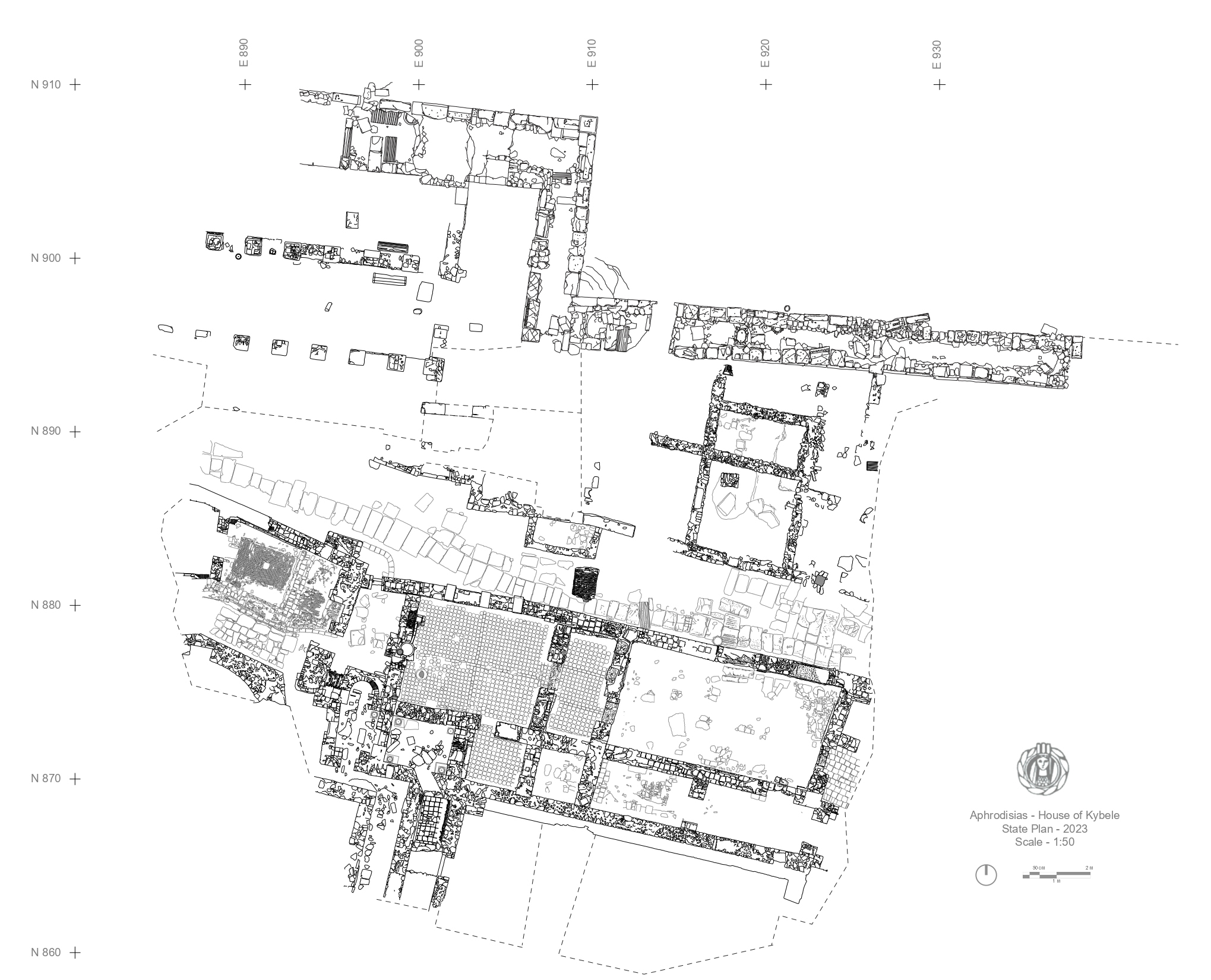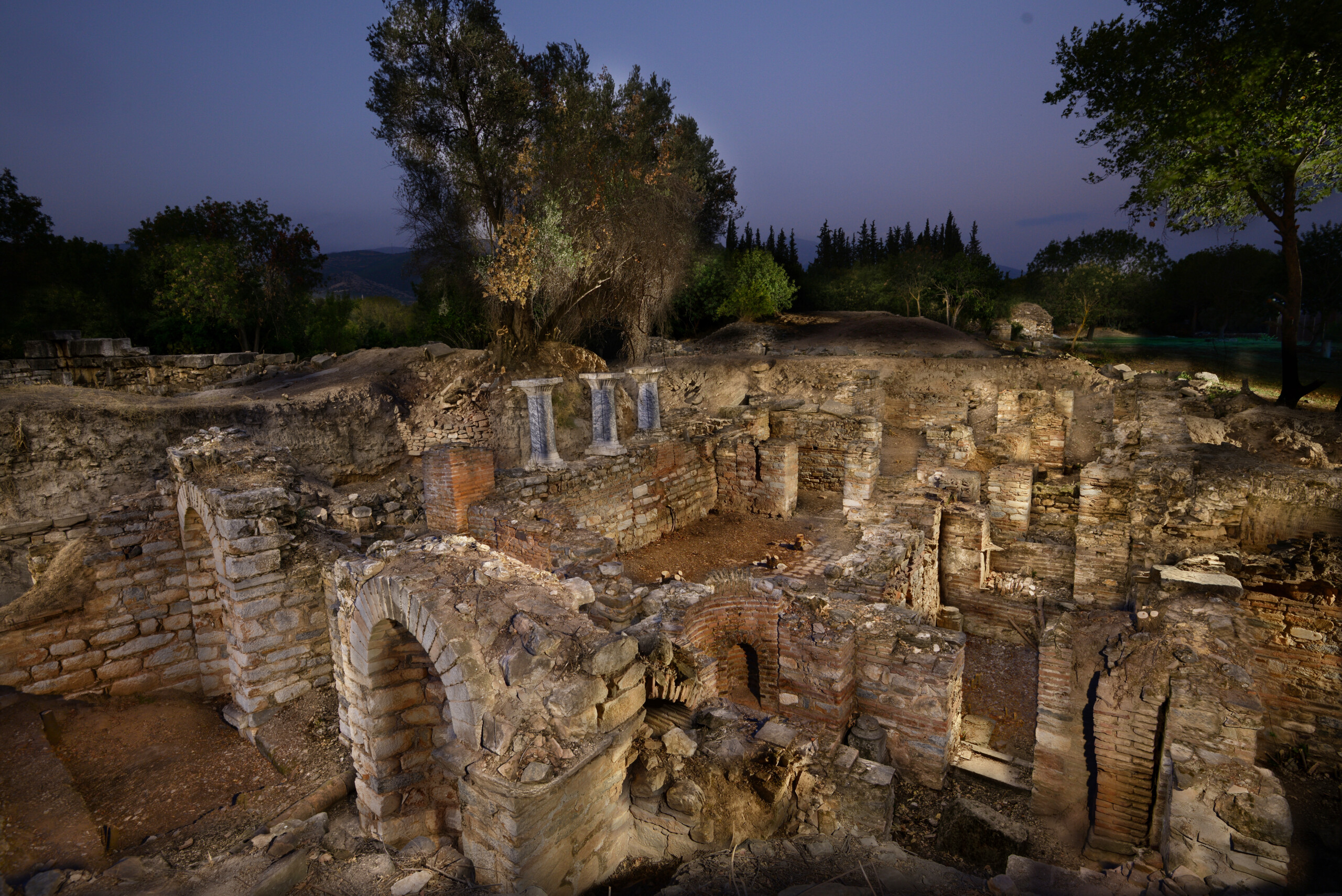House of Kybele
The project aims to study, conserve, and publish the house, its finds, and the impressive remains of the neighbourhood in which it stood at the northeast City Wall. The area was investigated by Kenan Erim between the 1960s and 1980s, but its excavation and study were not brought to completion. Formerly called the Water Channel House, the complex has been re-named the House of Kybele, after a striking late antique cult figure of the goddess found in it. The neighbourhood includes workshops, a warehouse, a street, and a city gate, as well as the house itself.
In 1956, high-quality figured reliefs from the funerary monument of C. Julius Zoilos, a former slave of the emperor Augustus responsible for financing much of Aphrodisias’ earliest civic infrastructure, were discovered in an Ottoman-era drainage channel adjacent to the northeast gate through the City Wall. Several seasons of excavation (1961–64, 1966–69 and 1984–89) investigated the area and uncovered various structures. The currently exposed parts belonged to a whole neighbourhood that included much of a late antique mansion that burned down in the early seventh century; a paved east-west street; a large warehouse; several smaller, probably commercial structures to the north of the street; and the fortification wall with city gate.
In 2019, a new programme of study and excavation was begun with the aim of cleaning out the old trenches, making a detailed state plan of the area and documentation of all the finds, and excavating further to clarify the character of the neighbourhood. Rich earlier finds of bronze tableware have been located and studied, and the state plan completed. New excavation is currently being undertaken to expose the connection between the house, street, and warehouse.








